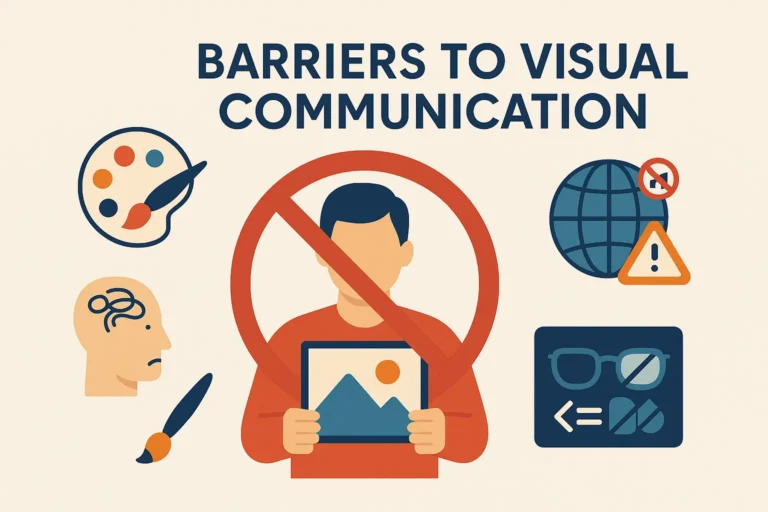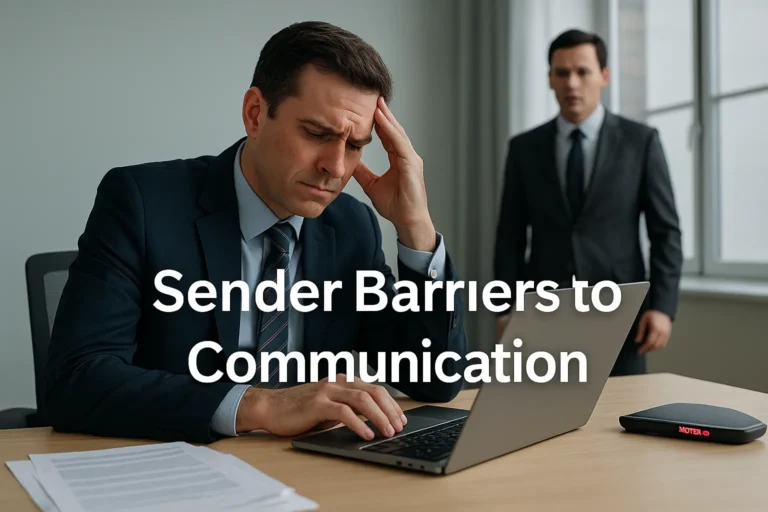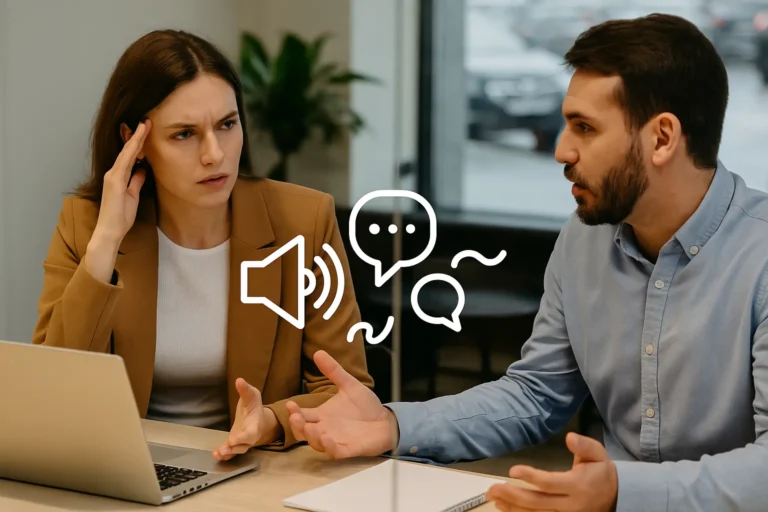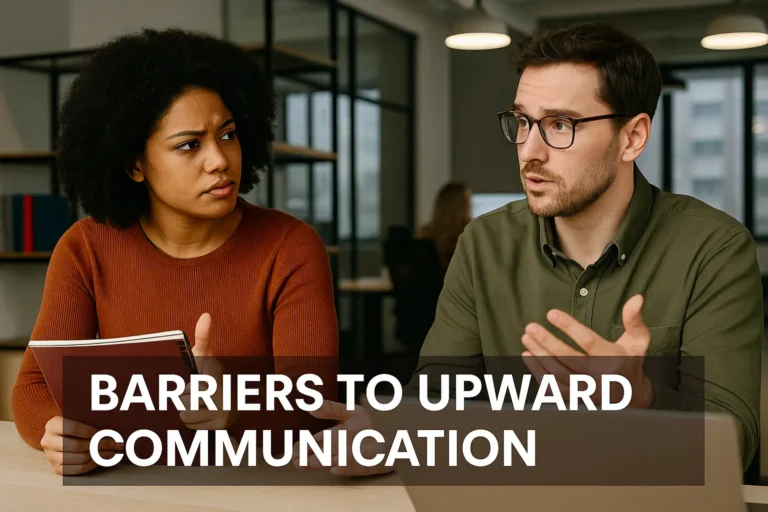Barriers of Oral Communication
Barriers of oral communication can affect anyone, whether you’re at work, home, or anywhere conversations happen. These obstacles make it difficult to share ideas clearly and build strong connections.he real problem isn’t always what you say, but what stands in the way of your words. From a noisy office to misunderstandings caused by technology or personal bias, oral communication faces many challenges. Understanding these barriers and learning how to overcome them can make life and work a lot smoother.
Whether you’re leading a meeting or talking with friends, knowing about these barriers and how to tackle them gives you an edge in everyday conversations. This guide will highlight the most common obstacles to oral communication and show you proven techniques to overcome them. The goal: help you become a more confident and effective communicator.
Common Barriers Of Oral Communication
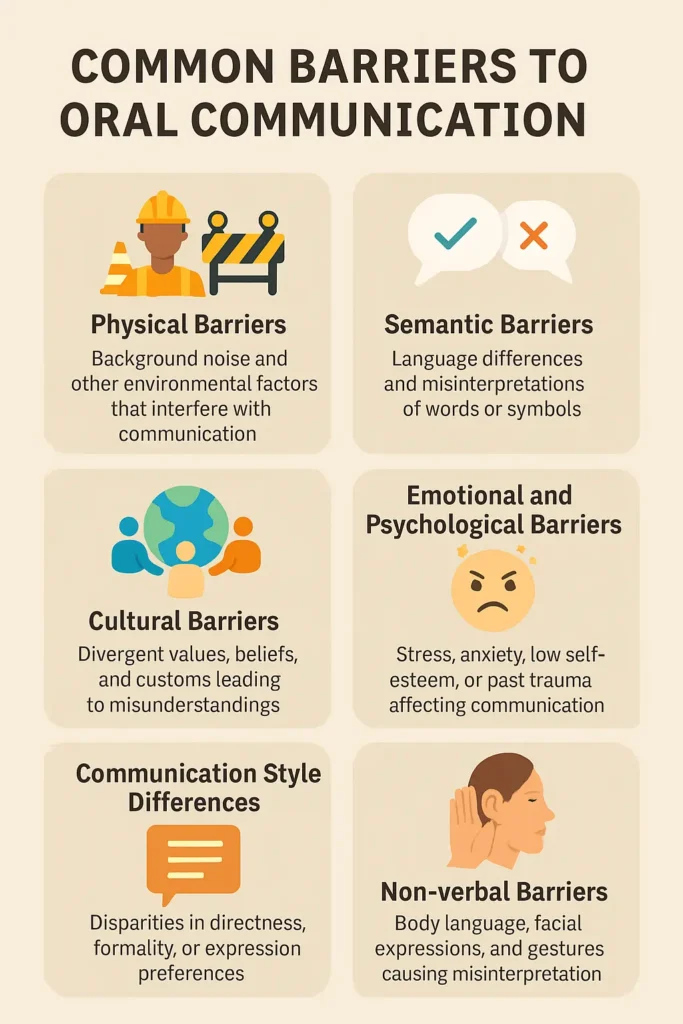
Physical and Environmental Barriers to Oral Communication
Physical surroundings often shape how well people can share ideas. Loud construction outside a meeting room, poor acoustics, or a distracting environment can quickly disrupt even the best-prepared speaker. Sometimes, it’s as simple as a door slamming or someone’s phone buzzing at the wrong moment.
Background noise is a frequent culprit. When distractions fill the air, it takes extra effort for both the speaker and listener to stay focused. Fatigue can set in, and important details may slip through the cracks. Poor lighting or seating arrangements that keep people from making eye contact can also break down connection.
Simple fixes:
- Choose quiet spaces for important discussions.
- Adjust seating to improve eye contact and body language.
- Reduce distractions, like closing doors or silencing phones, before starting.
Semantic Barriers
Language should build bridges, but sometimes it does the opposite. Semantic barriers occur when words mean different things to different people, leading to confusion or even conflict. Jargon, technical terms, slang, or regional expressions can all cause trouble.
Consider a supervisor using industry buzzwords while training new employees. If someone isn’t familiar with those terms, the meaning gets lost. Even simple words may mean different things across cultures or professions. For example, “table” in American English means to postpone, but in British English, it means to put forward for discussion.
How to avoid misunderstandings:
- Use simple, clear language.
- Explain unfamiliar terms or provide written definitions if needed.
- Pause regularly to check if everyone is following.
Psychological and Emotional Barriers
People bring their feelings and mental state to every conversation. Stress, anxiety, or lack of confidence can stop someone from expressing ideas clearly or listening carefully. Bias, stereotypes, or past experiences also shape how messages are sent and received.
Someone with public speaking anxiety may struggle to deliver a presentation, even when they know the topic well. Personal assumptions, such as expecting criticism, can make a person defensive and less receptive to new information.
What helps:
- Practice active listening—focus completely on the other person without judgment.
- Manage emotions before speaking, using techniques like deep breathing.
- Build trust through empathy and validation.
Cultural and Cross-Cultural Barriers
Today’s workplaces and communities bring together people from different backgrounds. That’s a strength, but it can also lead to confusion when values, customs, or communication styles clash. Even gestures or tone of voice can carry different meanings across cultures.
For instance, maintaining eye contact may be a sign of respect in one culture, but considered rude in another. A simple “yes” might not mean agreement, but only understanding.
Smart ways to bridge cultural gaps:
- Be curious about others’ backgrounds and preferences.
- Avoid assumptions or generalizations.
- Ask clarifying questions if something seems off.
Organizational and Hierarchical Barriers
In many workplaces, information flows through layers of authority. These organizational structures can distort messages, slow down feedback, or cause people to hold back their true thoughts—especially when speaking with higher-ups.
Managers who rely on formal communication channels may unintentionally create distance from employees. Power differences, gatekeeping, or unclear reporting lines make it difficult for messages to travel smoothly.
How to build better channels:
- Encourage feedback at all levels, not just from managers.
- Use regular meetings or anonymous surveys to gather honest input.
- Flatten hierarchy for open forums where everyone can speak.
Technological and Digital Barriers
Technology has changed how we talk, but it isn’t always an improvement. Poor connections on video calls, unclear emails, or overwhelming chat notifications can hinder oral communication. Technology sometimes strips away tone, body language, and immediate feedback—key elements for understanding.
Information overload is another digital-age problem. When too much information floods in at once, people may miss the message or respond only partially. Digital etiquette also varies, leading to confusion about what’s appropriate.
To minimize tech-related issues:
- Use video calls when possible for richer communication.
- Set guidelines for email and chat (e.g., short emails for quick updates, calls for detailed topics).
- Take regular breaks from digital devices to refresh your focus.
Encoding, Decoding, and the Feedback Loop
Oral communication depends on encoding (turning thoughts into words) and decoding (interpreting what’s heard). Problems happen if either step fails—perhaps the speaker uses unclear wording, or the listener filters information through their own biases. Selective perception, where we hear only what we want or expect, is a subtle but common obstacle.
The feedback loop is essential for success. Without it, misunderstandings go unchecked. Asking for feedback, encouraging questions, or paraphrasing the message (“So you’re saying…”) keeps the conversation on track.
Tips for a healthy feedback loop:
- Pause and invite questions often.
- Repeat back what you’ve heard to confirm.
- Use nonverbal signals like nodding or eye contact to show engagement.
Nonverbal Communication and Paralanguage
Not every message comes through words. Body language, tone, pitch, and facial expressions (collectively called paralanguage) say a lot about the speaker’s feelings and intent. If nonverbal cues clash with spoken words—like a smile paired with angry words—the listener may feel confused.
Physical gestures, posture, and even silence can shift the meaning of a message. In virtual meetings, limited camera views or poor audio reduce these vital clues.
Best practices:
- Match body language with the spoken message.
- Be aware of your tone and pace.
- In digital settings, use video when possible and speak clearly.
Barriers for People with Physical Disabilities
Physical disabilities such as hearing loss or speech difficulties present unique challenges. These are sometimes overlooked but are critical for inclusive communication. Lack of assistive technology, poor accessibility, or insensitivity can block people from participating fully.
What to do:
- Use microphones and hearing aids in meetings.
- Offer written materials or transcripts.
- Check that digital tools meet accessibility standards.
Information Overload, Gatekeeping, and Contextual Barriers
Too much information, or having it filtered through a “gatekeeper,” can cause important details to be missed. Information overload makes it difficult to process, remember, or act on key points. Gatekeeping, where one person controls the flow of information, slows decisions and causes frustration.
Context also matters—a message delivered at the wrong time or in the wrong setting can be misunderstood or ignored.
Simple ways to manage these barriers:
- Share information in digestible chunks.
- Ensure open channels so everyone has access.
- Tailor messages to the timing and needs of the group.
How to Overcome Barriers to Effective Oral Communication
Improvement comes from awareness and regular practice. Here are some practical tips for breaking down the barriers described above:
Develop Active Listening Skills
- Give full attention to the speaker, using eye contact and nonverbal signals.
- Avoid distractions (put away phones, turn off notifications).
- Reflect and paraphrase to confirm understanding.
- Wait until the speaker finishes before responding.
Adjust Communication Style and Language
- Use plain, direct words; skip jargon or buzzwords.
- Speak at a comfortable pace, and be open to feedback.
- Adapt to your audience—consider age, background, and familiarity with the topic.
Create a Supportive Environment
- Set a respectful, open tone where all voices are welcome.
- Offer positive feedback and show appreciation for input.
- Address emotional barriers with patience and empathy.
Use the Right Channel and Tools
- Match the message to the medium (face-to-face for sensitive topics, email for updates).
- Ensure technology works smoothly—test equipment before meetings.
- Provide options for those with accessibility needs.
Encourage Feedback and Continuous Improvement
- Invite questions and suggestions.
- Regularly assess whether messages are being received and understood.
- Celebrate improvements and share success stories.
Conclusion
Breaking through the barriers of oral communication takes practice and patience, but the payoff is worth it. By applying these techniques, you’ll notice a real difference in how you connect with others and avoid common misunderstandings. Keep learning, keep improving, and soon the barriers of oral communication won’t hold you back.
Remember, effective oral communication is the key to strong relationships and successful teamwork. As you put these strategies into action, you’ll notice more meaningful exchanges, fewer misunderstandings, and a smoother path to your goals. For more on effective communication, check out other posts on this site or visit recommended resources above.

